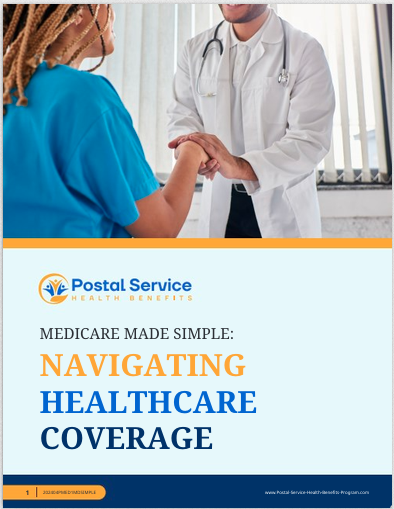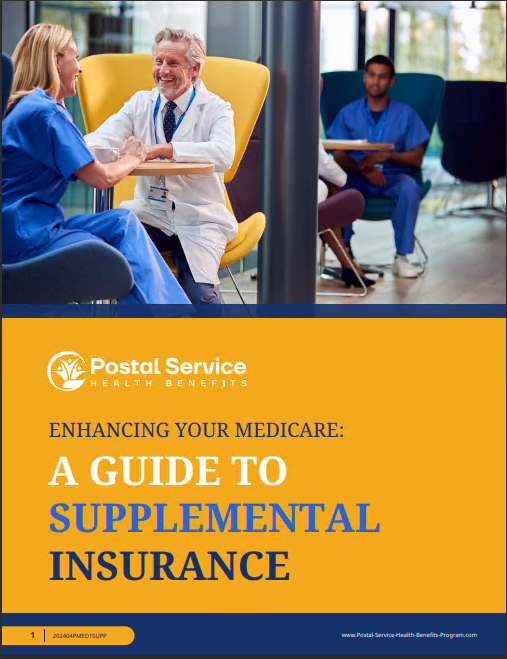Key Takeaways
-
The 2025 transition to Postal Service Health Benefits (PSHB) impacts all USPS employees, retirees, and their families, requiring thoughtful decision-making during enrollment periods.
-
Coordinating PSHB plans with Medicare Part B and understanding eligibility requirements are critical for optimizing your healthcare coverage and minimizing out-of-pocket costs.
The Shift to PSHB: What It Means for You
In 2025, the Postal Service Health Benefits (PSHB) program replaces the Federal Employees Health Benefits (FEHB) system for USPS employees, retirees, and their eligible family members. This transition affects over 1.6 million individuals, making it essential for you to understand how this change impacts your health coverage.
The PSHB program is tailored to meet the unique needs of postal workers and retirees. However, navigating the new options and requirements can be overwhelming. Let’s break it down so you can make informed decisions about your healthcare.
Enrollment Requirements: Are You Eligible?
Automatic Enrollment
If you’re already enrolled in FEHB, you’re automatically transitioned to a corresponding PSHB plan. However, this doesn’t mean you should skip reviewing your plan details. Automatic enrollment ensures continuity, but it might not align perfectly with your needs.
Medicare Part B Enrollment
If you or your family members are eligible for Medicare, you must enroll in Medicare Part B to maintain PSHB coverage. Exceptions exist for certain groups, such as those who retired on or before January 1, 2025, or employees who turned 64 or older by the same date. Failure to enroll could result in losing your PSHB coverage or facing additional costs.
Key Dates to Remember
Annual Open Season: From October 15 to December 7, you can review and adjust your PSHB coverage for the upcoming year. For 2025, changes made during Open Season took effect on January 1. Missing this window means you can only alter your coverage during a Qualifying Life Event (QLE), such as marriage or the birth of a child.
Medicare Coordination Deadline: Ensure your Medicare Part B enrollment aligns with your PSHB coverage requirements to avoid lapses or penalties.
Understanding the Cost Structure
The PSHB program offers a range of plan options, each with different premiums, deductibles, and out-of-pocket limits. While specific plan prices vary, here are some general guidelines to consider:
-
Premium Contributions: Most PSHB plans share premium costs between the USPS and enrollees, similar to FEHB. Higher-income households may face adjusted contributions.
-
Deductibles and Copayments: Understanding your deductible and copayment responsibilities is key to managing costs.
-
Medicare Savings: Many PSHB plans waive deductibles and offer premium reimbursements if you’re enrolled in Medicare Part B. Evaluate how these benefits can reduce your overall expenses.
Navigating Prescription Drug Coverage
With the integration of Medicare Part D Employer Group Waiver Plans (EGWPs), prescription drug benefits under PSHB have changed. Here’s what you need to know:
-
Automatic Enrollment in Part D: Medicare-eligible members automatically receive Part D coverage through their PSHB plan.
-
Out-of-Pocket Cap: A $2,000 annual cap on prescription drug costs provides significant relief for high medication expenses.
-
Payment Flexibility: The Medicare Prescription Payment Plan allows you to spread out-of-pocket costs over the year in manageable monthly installments.
Making the Most of Your Benefits
Compare Plans
During Open Season, review plan details such as premiums, provider networks, and out-of-pocket costs. Look for plans offering supplemental benefits like dental, vision, or hearing coverage if these are important to you.
Optimize Medicare Integration
If you’re Medicare-eligible, coordinate your PSHB plan with Medicare Part B. Many PSHB plans offer enhanced benefits for enrollees with Medicare, such as reduced premiums or waived deductibles. This integration can lead to better coverage and cost savings.
Utilize Preventive Services
Take advantage of free or low-cost preventive services offered under most PSHB plans, such as wellness visits, immunizations, and screenings. These services help you stay healthy and avoid costly medical issues down the line.
Special Considerations for Retirees
Transitioning from FEHB to PSHB
Retirees who previously relied on FEHB must now navigate the PSHB landscape. While many plan features remain similar, it’s crucial to reassess your coverage to ensure it meets your current needs.
Medicare and PSHB Coordination
If you’re already enrolled in Medicare, aligning it with your PSHB plan is critical. Consider how deductibles, copayments, and premium reimbursements might affect your overall costs.
Family Members’ Coverage
Ensure your dependents’ eligibility under PSHB, especially if they’re not Medicare-eligible. Verify their coverage options to avoid unexpected gaps.
Planning for Life Events
Qualifying Life Events (QLEs) such as marriage, divorce, or the birth of a child allow you to make changes to your PSHB coverage outside the Open Season. When a QLE occurs, act quickly to update your plan within the required timeframe. Documenting these changes ensures continuous coverage for you and your family.
Steps to Prepare for the Transition
1. Review Your Plan Options
Start by comparing the benefits, costs, and provider networks of various PSHB plans. Pay attention to how each plan integrates with Medicare if you’re eligible.
2. Assess Your Healthcare Needs
Consider your current and future medical needs, including potential surgeries, chronic conditions, or medications. Choose a plan that aligns with your anticipated expenses.
3. Check Provider Availability
Ensure your preferred doctors, hospitals, and specialists are included in the plan’s network. Switching plans might require you to change providers, so verify this ahead of time.
4. Consult with a Benefits Specialist
If you’re unsure about which plan to choose, reach out to a benefits specialist. They can help clarify plan details and guide you through the enrollment process.
Staying Informed
Review Your ANOC
The Annual Notice of Change (ANOC) highlights any modifications to your plan’s benefits, premiums, or cost-sharing requirements. Carefully review this document to avoid surprises.
Stay Updated on Medicare Rules
Changes to Medicare’s income thresholds, premiums, and benefits can affect your PSHB coverage. Stay informed to ensure your plan remains cost-effective.
Monitor USPS Communications
The USPS regularly updates enrollees about PSHB. Pay attention to mailings and emails to stay on top of deadlines and requirements.
Ensuring Smooth Enrollment
Double-Check Deadlines
Missing key dates can result in coverage lapses or penalties. Mark your calendar with important deadlines to ensure timely action.
Use Online Tools
Many USPS resources and plan providers offer online tools to compare plans and estimate costs. Take advantage of these to simplify your decision-making process.
Keep Your Information Updated
Ensure your contact details are current with USPS to receive timely notifications about your PSHB coverage.
What to Watch Out For
Penalties for Missing Medicare Part B Enrollment
Failing to enroll in Medicare Part B when required can result in permanent penalties and increased costs. Don’t overlook this critical step.
Misaligned Coverage
Ensure your PSHB plan coordinates seamlessly with any other coverage you have, such as Medicare or spouse-provided insurance. Overlapping or inadequate coverage can lead to unnecessary expenses.
Out-of-Network Costs
Choosing a plan without verifying network providers may result in higher out-of-pocket costs. Confirm that your preferred healthcare providers accept your plan.
How PSHB Simplifies Healthcare
The PSHB program aims to streamline healthcare for USPS employees and retirees. With tailored options, improved prescription drug benefits, and Medicare integration, it addresses the unique needs of its members. By understanding the program’s offerings and making informed choices, you can ensure robust coverage for yourself and your family.
Taking Charge of Your Healthcare in 2025
Navigating the 2025 changes to USPS health benefits may seem daunting, but careful planning can make the transition smoother. By understanding PSHB’s structure, reviewing plan options, and aligning Medicare coverage, you can make the best choices for your health and budget. Don’t leave your healthcare to chance—take action today to secure your future.







